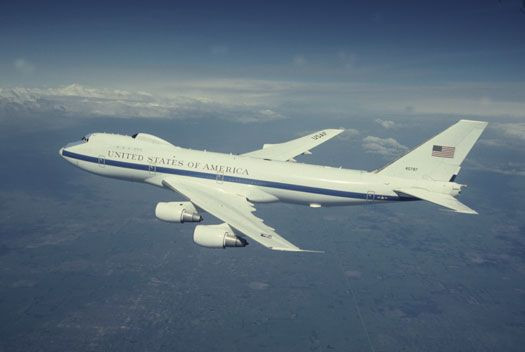USAF Searching For 'Doomsday' Plane Replacement But Does It Have A Choice?

The United States Air Force is currently looking for a replacement for the E-4A Nightwatch, also known as the National Operations Airborne Center (NOAC) or “Doomsday” plane, which allows Pentagon staff to operate from an airborne platform in the event of an emergency.
The current aircraft filling this role was developed in the aftermath of the Cuban Missile Crisis of 1962 and is a militarized version of the Boeing 747. It is very similar to Air Force 1 and 2, which respectively carry the President of the United States and the Vice President, and it functions as a backup White House in the event of an emergency that disables the first two options. The Air Force One is also a heavily modified version of the Boeing 747.
A report by AerotimeHUB said that the U.S. Air Force released an information notice this week and announced that it would review the possible replacement of the entire E-4 fleet. The current aircraft date back to the 1970s, which means they are starting to reach the end of their life cycle and effectiveness to fulfill their role. The program, known as Survivable Airborne Operations Center (SAOC), will require potential suitors to make themselves known by Dec. 20.
Under normal circumstances, the military would probably look to Boeing Corp. to supply the planes. However, a little-discussed fact is that Boeing is already facing major delays with its current replacements for the Air Force presidential aircraft that were selected in 2015. These are essentially modified Boeing 747-8 planes. Then president-elect Donald Trump had also tweeted out his opposition to the program in 2016 over its cost, which was estimated at more than $4 billion.
The 747-8th generation aircraft is the most likely candidate to replace who the aging 747 2nd generation aircraft but then, as AerotimeHub reported, the production of these planes has slowed down and the program faces cancellation. The Air Force has reportedly contracted to buy two undelivered 747-8s and retrofit them for its Air Force One replacement program to reduce delays and costs.
Boeing insiders say the company's current troubles with the 737 Max plane, after two crashes that killed 346 people, have caused funding issues for its other projects. In July, Boeing took an after-tax charge of $4.9 billion on estimated disruptions from the grounding of the planes. Boeing had indicated that it was looking forward to the 737 Max flying again in December, but the FAA has turned that into a pipedream much to the chagrin of investors, and customers including the U.S. military.
The company also stripped CEO Dennis Muilenburg of the chairman title as it focused on safety and returning the 737 MAX to service. Earlier this week it was reported that Boeing's Commercial Airplanes Chief Engineer John Hamilton, who led the response to the 737 Max crisis, is retiring.
An engineer working for Boeing's design and development department, who spoke on the condition of anonymity, told International Business Times that the company is so tied up with the 737 Max that it has not been able to focus resources on any new projects, which have fallen behind schedule. It was reported Dec. 5 that in an Oct. 18 letter to the Securities and Exchange Commission, Boeing had said that any significant setbacks in getting the 737 Max back in the air could lead to to further cutbacks in its production or even a temporary halt.
With so many political hotspots in the world, the importance of an airborne White House / Pentagon Staffing aircraft has only increased. The aircraft remain on 24X7 alert at Offutt Air Force Base in Nebraska. They have been scrambled during several crisis situations, including on 9/11 when the entire fleet was in the air for the first time in its history.
If Boeing is unable to step up to fulfill this critical Air Force requirement, who else can the contract go to? The next best candidate could be Lockheed Martin, but it may not have a suitable air frame available immediately. And that is not good for America's military preparedness.
© Copyright IBTimes 2024. All rights reserved.






















